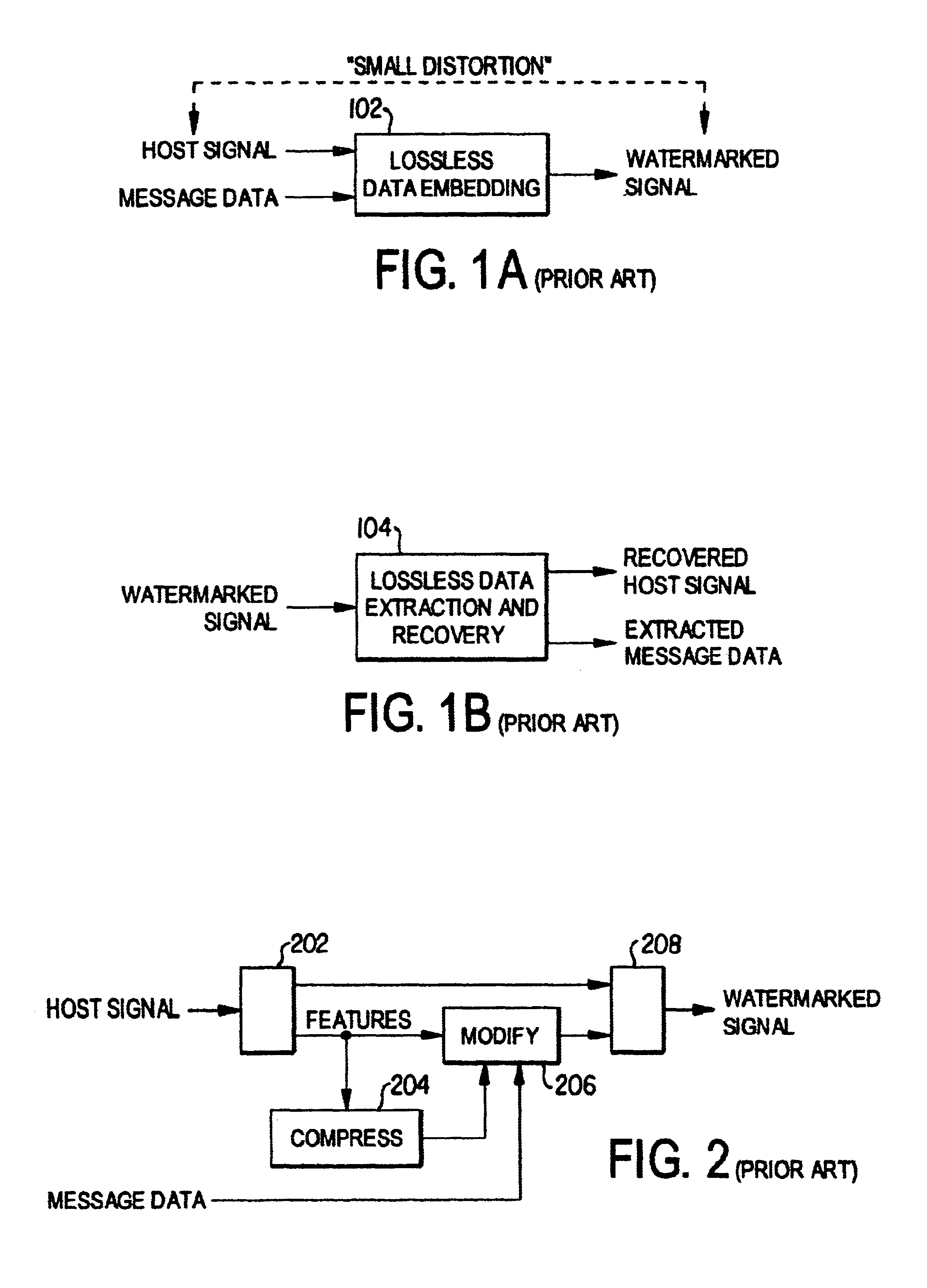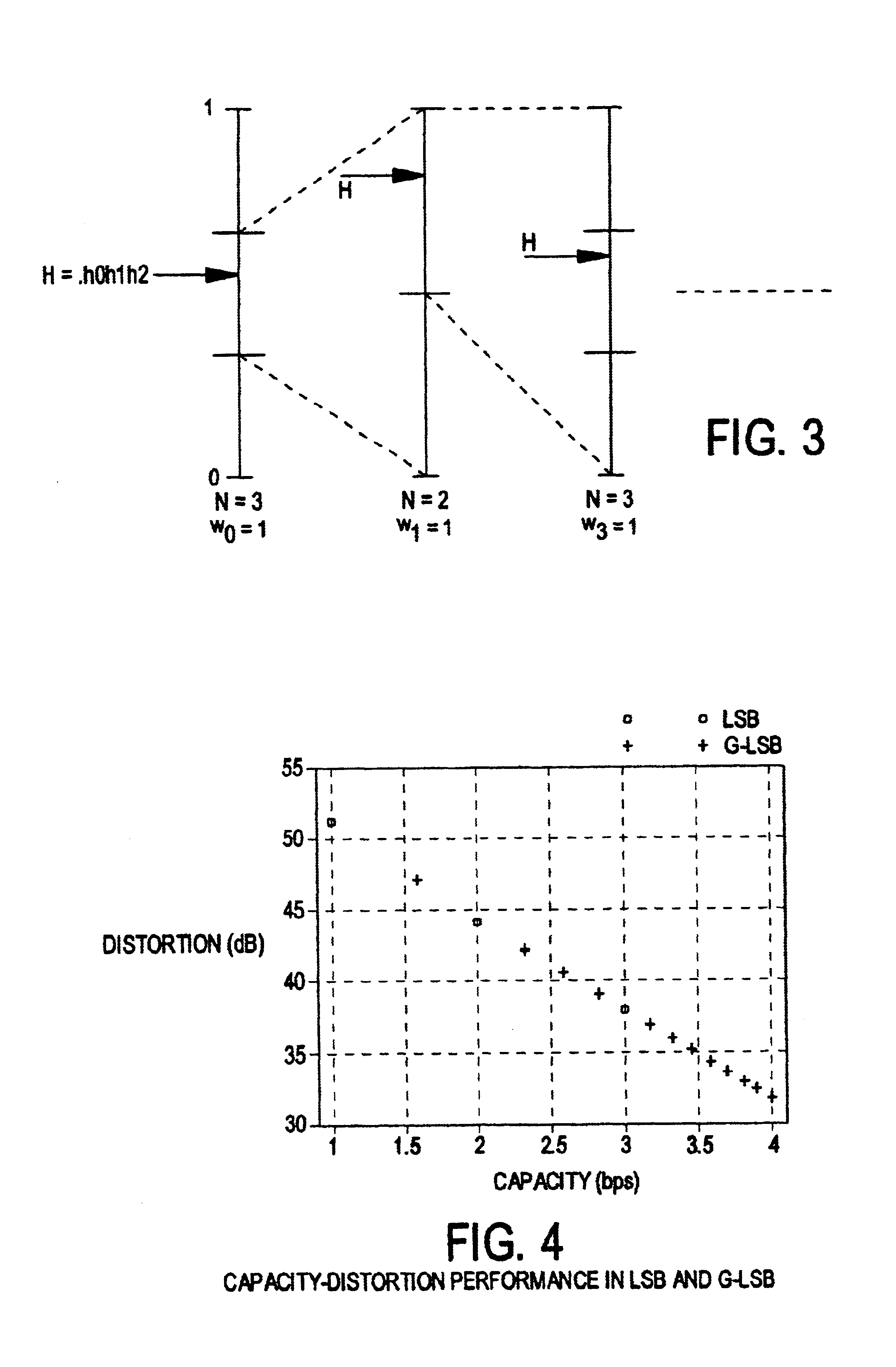System and method for embedding information in digital signals
a digital signal and information technology, applied in image watermarking, instruments, computing, etc., can solve the problem of lossless embedding capacity, achieve excellent image compression, improve compression performance, and achieve lossless embedding capacity
- Summary
- Abstract
- Description
- Claims
- Application Information
AI Technical Summary
Benefits of technology
Problems solved by technology
Method used
Image
Examples
Embodiment Construction
[0028]A preferred embodiment of the invention and modifications thereof will be described with reference to the drawings.
[0029]One of the earliest data embedding methods is the LSB (least significant bit) modification. In this well-known method, the LSB of each signal sample is replaced (over-written) by a payload data bit embedding one bit of data per input sample. If additional capacity is required, two or more LSB's may be over-written allowing for a corresponding bits per sample. During extraction, these bits are read in the same scanning order, and payload data is reconstructed. LSB modification is a simple, non-robust embedding technique with a high embedding capacity and small bounded embedding distortion (J=1). A generalization of the LSB embedding method, namely Generalized-LSB Embedding, is employed here. If the host signal is represented by a vector s, the Generalized-LSB embedding and extraction processes can be represented as
sw=QL(s)+w, (1)
w=sw−QL(sw)=sw−QL(s), (2)
whe...
PUM
 Login to View More
Login to View More Abstract
Description
Claims
Application Information
 Login to View More
Login to View More - R&D
- Intellectual Property
- Life Sciences
- Materials
- Tech Scout
- Unparalleled Data Quality
- Higher Quality Content
- 60% Fewer Hallucinations
Browse by: Latest US Patents, China's latest patents, Technical Efficacy Thesaurus, Application Domain, Technology Topic, Popular Technical Reports.
© 2025 PatSnap. All rights reserved.Legal|Privacy policy|Modern Slavery Act Transparency Statement|Sitemap|About US| Contact US: help@patsnap.com



